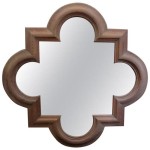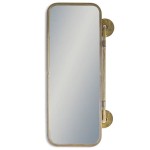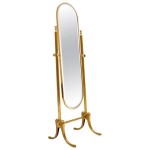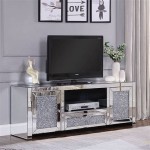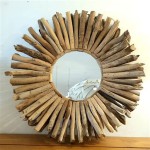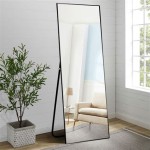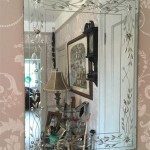Replacing Bathroom Mirror Clips
Bathroom mirror clips play a crucial role in securing the mirror to the wall, ensuring both safety and stability. Over time, these clips can become damaged, loose, or aesthetically outdated, necessitating replacement. This process, while seemingly straightforward, requires attention to detail and proper technique to avoid damaging the mirror or surrounding wall. This article provides a comprehensive guide to replacing bathroom mirror clips safely and effectively.
Assessing the Current Clips and Mirror
Before purchasing replacement clips, it's essential to assess the existing hardware and the mirror itself. Identify the type of clips currently in use. Common types include J-clips, L-clips, and U-clips, each designed for specific mirror thicknesses and mounting methods. Measure the thickness of the mirror accurately to ensure the new clips provide a secure fit. Examine the mirror for any existing chips or cracks. Pre-existing damage may worsen during the removal and installation process, making it prudent to consider replacing the entire mirror if significant flaws are present.
Choosing the Right Replacement Clips
Selecting appropriate replacement clips is crucial for a successful installation. Choose clips specifically designed for bathroom environments to withstand humidity and temperature fluctuations. Opt for clips constructed from durable materials such as stainless steel or chrome-plated brass for corrosion resistance. Consider the aesthetic of the clips and how they will complement the overall bathroom design. Ensure the clips' weight capacity is suitable for the size and weight of the mirror.
Gathering Necessary Tools and Materials
Proper preparation streamlines the replacement process. Assemble the necessary tools and materials before beginning the project. These typically include a screwdriver (Phillips or flathead, depending on the clip type), a putty knife or thin blade for removing adhesive, a pencil for marking, a measuring tape, safety glasses, and work gloves. Having replacement screws on hand is also recommended, as the original screws may be damaged or corroded.
Removing the Old Mirror Clips
Removing the old clips requires careful handling to avoid damaging the mirror or wall. Begin by carefully loosening the screws holding the clips in place. If the clips are glued or adhered to the mirror or wall, use a putty knife or thin blade to gently pry them loose. Avoid applying excessive force, which could crack the mirror. Once the clips are detached, clean the mirror and wall surfaces of any remaining adhesive residue.
Installing the New Mirror Clips
With the old clips removed and the surfaces clean, begin installing the new clips. Position the new clips in the same locations as the old ones, ensuring they are aligned correctly. If the old clip locations are unsuitable or if the new clips are a different design, carefully measure and mark the new positions. Use the appropriate screws to secure the clips to the wall, being careful not to overtighten. The clips should hold the mirror firmly against the wall without putting undue pressure on the glass.
Securing the Mirror to the Clips
Once the clips are securely attached to the wall, carefully position the mirror against the clips. Ensure the mirror is evenly seated within the clips. Some clip designs require additional screws to secure the mirror to the clips, while others rely on a friction fit. Follow the manufacturer's instructions for the specific clip type. Gently apply pressure to the mirror to ensure it is firmly in place. Double-check the stability of the mirror by applying gentle pressure at various points.
Applying Mirror Mastic (Optional)
While not always necessary, applying mirror mastic can provide additional security and prevent the mirror from shifting over time. Mirror mastic is a specialized adhesive designed for use with mirrors. If using mastic, apply a thin bead to the back of the mirror before placing it against the clips. Follow the manufacturer's instructions for drying time and proper application techniques.
Final Inspection and Adjustments
After installation, inspect the mirror and clips to ensure everything is secure and aesthetically pleasing. Check for any gaps between the mirror and the wall. If necessary, make minor adjustments to the clips to ensure a snug fit. Wipe away any excess mirror mastic or fingerprints from the mirror surface. Verify the stability of the mirror one final time by gently applying pressure.

2 Step Guide How To Remove A Bathroom Mirror With Clips

Removing A Bathroom Mirror Mounting Clips Or Brackets

How To Frame A Mirror With Clips In 5 Easy Steps

Mirror Clips Hometalk

How To Frame A Bathroom Mirror Over Plastic Clips Somewhat Simple

How To Frame A Bathroom Mirror Over Plastic Clips Somewhat Simple

How To Frame A Bathroom Mirror Over Plastic Clips Somewhat Simple

Diy Bathroom Mirror Frame Without Removing Clips Her Happy Home

Diy Bathroom Mirror Frame Without Removing Clips Her Happy Home

4pcs Chrome Mirror Wall Hanging Fixing Kit Frameless Clips Mounting Hanger Clamp

